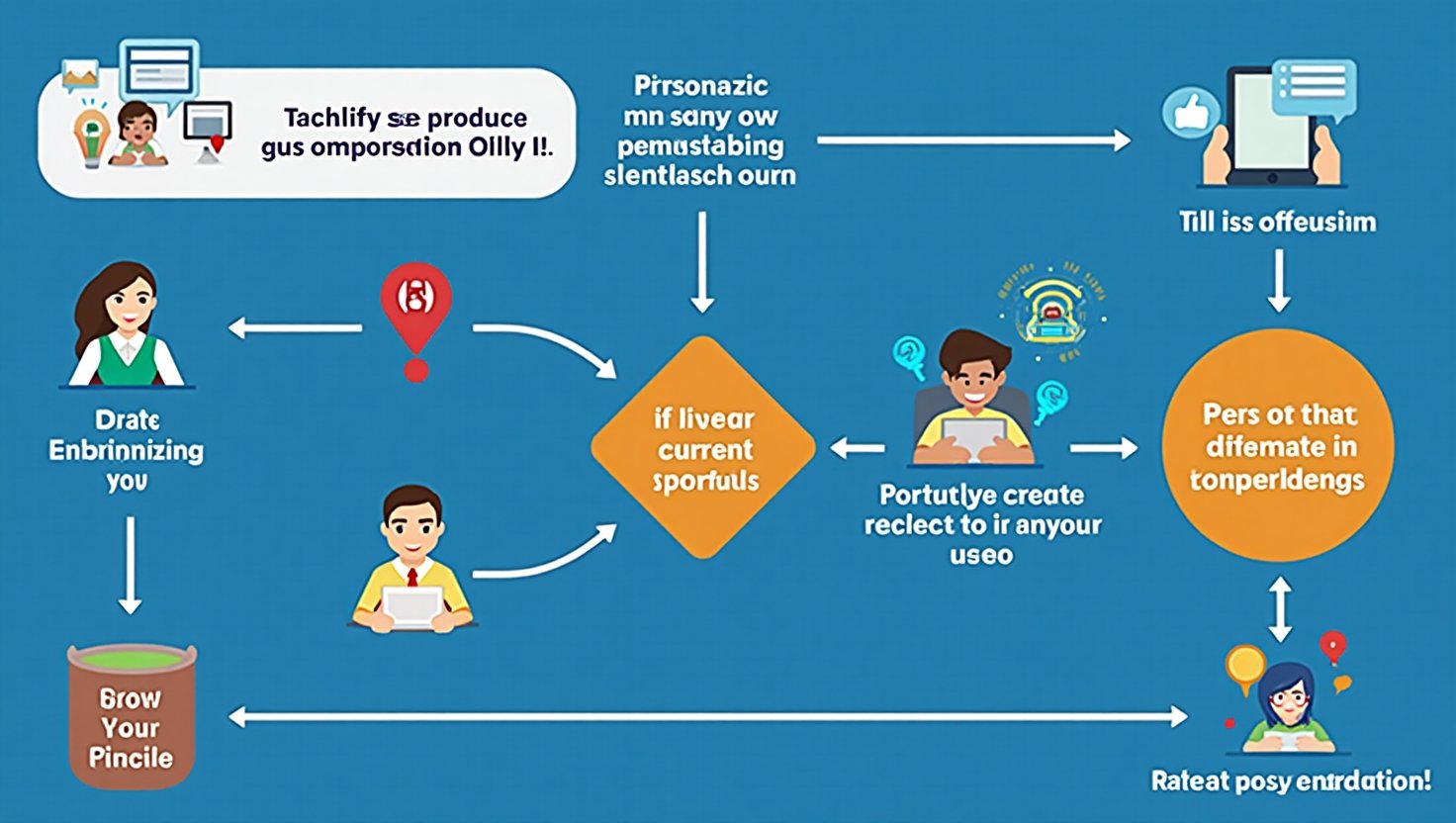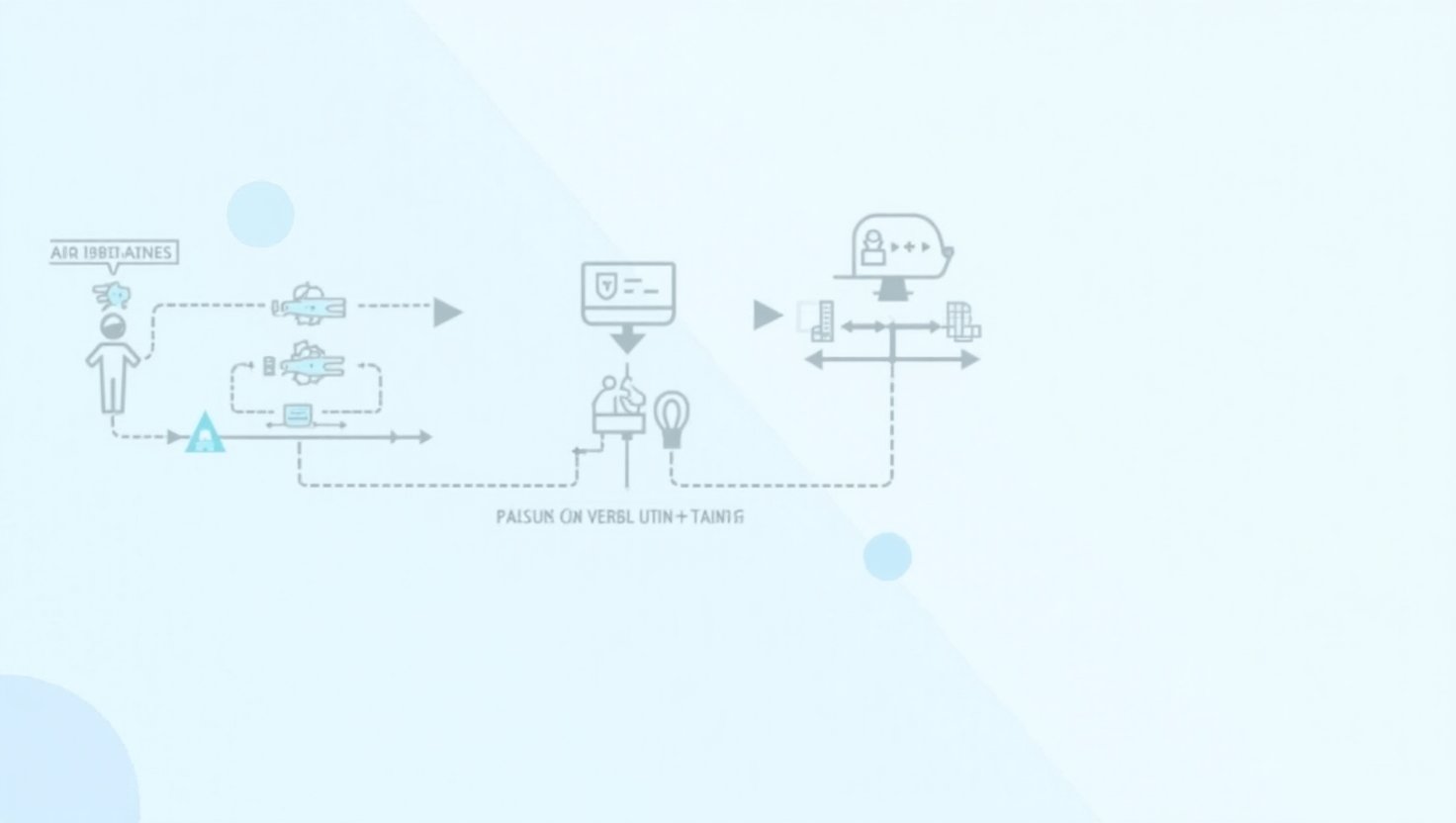In today’s digital landscape, Conversational AI Agents with persistent memory play a crucial role in enhancing human-computer interactions. These advanced systems engage users in meaningful dialogues while remembering important context from past conversations, which significantly improves user experience. By utilizing agent memory, these AI agents can recall details, preferences, and behaviors, enabling more personalized and relevant interactions.
This article explores how conversational AI agents work, the vital role of persistent memory, and the technologies that empower them. Readers will discover how to build smart conversational AI agents using accessible tools like Cognee and Hugging Face models, paving the way for creating enriched conversational experiences. This tutorial will cover the mechanisms behind agent memory, its practical applications, and the exciting developments that have made AI conversations more human-like than ever before.
Whether you are a developer eager to create unique conversational models or simply interested in technological innovations, this guide will introduce you to the evolving realm of AI-driven interactions, showcasing how these agents not only respond, but also learn and remember, changing the way we engage with technology.
User Adoption Data for Conversational AI Agents
The adoption of conversational AI agents is markedly increasing across various sectors, including customer service, healthcare, and education. This surge reflects a broader trend towards utilizing AI technology to enhance operational efficiency and improve user experiences.
Customer Service
- Adoption Rates: By 2025, it is projected that AI will manage 95% of all customer interactions. This shift aims to significantly decrease response times and cut down operational costs [Desk365].
- Efficiency Gains: Companies using AI tools have reported a 45% reduction in call durations and a 44% faster issue resolution rate compared to human agents [Sendbird].
- Customer Satisfaction: Businesses integrating AI in customer service have observed a 32% revenue increase, suggestive of enhanced customer satisfaction and loyalty [Sendbird].
Healthcare
- Usage Statistics: Approximately 40% of healthcare providers are employing chatbots for appointment scheduling, while 50% use them for symptom checking [SeoSandwitch].
- Reduction in Administrative Work: AI has eased administrative work for doctors by 20%, allowing them to prioritize patient care [SeoSandwitch].
- Patient Engagement: Following the deployment of chatbots, patient satisfaction increased by 35%, indicating a positive reception of AI-driven interactions [SeoSandwitch].
Education
- Adoption Trends: Around 32% of educational institutions have begun offering 24/7 chatbot-based student support, significantly improving accessibility and responsiveness [SeoSandwitch].
- Administrative Streamlining: AI solutions in educational settings have simplified administrative tasks and allowed educators to redirect their attention to teaching and student engagement.
- Enhanced Learning Experiences: Students have reported higher satisfaction levels due to the immediate assistance and personalized learning opportunities facilitated by AI chatbots.
Business Implications
- Cost Reductions: Companies leveraging AI chatbots have reported substantial savings, with some, like NIB, saving $22 million through automated services [Desk365].
- Increased Productivity: The implementation of AI tools has led to a 13.8% rise in agent productivity, enabling teams to resolve more customer inquiries per hour [ElectroIQ].
- Strategic Advantage: Firms adopting AI technologies indicate a 32% revenue boost, showcasing the competitive edge offered by AI integration in business operations [Sendbird].
Overall, the momentum behind conversational AI adoption signifies a transformative shift in how industries operate, enhancing service delivery, operational efficiencies, and user satisfaction. This trend is expected to continue, marking the beginnings of widespread AI utilization across various sectors.


The significance of persistent memory in conversational AI agents cannot be overstated. By retaining context and previous interactions, these systems provide users with a more tailored and intuitive conversational experience. When an AI agent remembers a user’s previous preferences or past discussions, it transforms the nature of interaction from a simple query-response format to a rich, personalized dialogue.
Examples of Enhanced User Interaction
- Healthcare Applications: Consider a healthcare AI agent that tracks a patient’s medical history, including treatments and lifestyle choices. For instance, by remembering a diabetic patient’s dietary habits, the AI can offer customized meal recommendations and reminders for medication, thus improving health outcomes through timely intervention. As noted in a study by IdeaUsher, “AI can track patients’ records and help them make informed healthcare decisions which can lead to better health management” (IdeaUsher).
- E-Commerce: An e-commerce conversational agent can enhance user experience by suggesting products based on previous purchases and browsing behavior. If a user frequently buys fitness gear, the AI can proactively recommend new equipment or related products during subsequent interactions. This level of personalization not only increases the likelihood of sales but also builds a stronger relationship between the customer and the service provider.
- Customer Support: In customer support scenarios, persistent memory allows AI agents to recall users’ past complaints and resolutions. For instance, if a customer previously reported an issue with a product, the AI can promptly provide follow-up information without needing the user to repeat their issue. This capability reduces frustration and creates a smoother experience for the user.
Performance Improvements
The integration of persistent memory also leads to significant performance metrics. For example, the ability to reference previous interactions reduces redundancy in conversations, allowing for more efficient exchanges of information. This efficiency is crucial for resolving issues swiftly, ultimately leading to enhanced customer satisfaction and trust. As highlighted by experts, “Memory in AI doesn’t just produce better task performance – it shapes how users emotionally relate to and trust the system” (Generational).
Conclusion
In summary, the integration of persistent memory in conversational AI agents enhances user interactions by enabling a more personalized and contextually aware experience. By recalling past conversations and preferences, these systems not only streamline communication but also improve overall performance, paving the way for a future where users feel a deeper connection with AI systems.
| AI Framework | Features | Ease of Use | Languages Supported |
|---|---|---|---|
| Cognee | Persistent memory, Natural language processing | User-friendly interface | Python, JavaScript |
| Hugging Face | Transformer models, Fine-tuning, Extensive community | Requires some coding knowledge | Python |
| DialoGPT | Pre-trained dialogue model, Contextual responses | Moderate | Python, JavaScript |
| Rasa | Open-source, Customizable, AI training | Moderate to complex | Python, JavaScript |
| Microsoft Bot Framework | Integration with Azure services, Multi-channel support | Easy for Azure users | Multiple languages |
| AI Framework | Features | Ease of Use | Languages Supported |
|---|---|---|---|
| Cognee | Persistent memory, Natural language processing | User-friendly interface | Python, JavaScript |
| Hugging Face | Transformer models, Fine-tuning, Extensive community | Requires some coding knowledge | Python |
| DialoGPT | Pre-trained dialogue model, Contextual responses | Moderate | Python, JavaScript |
| Rasa | Open-source, Customizable, AI training | Moderate to complex | Python, JavaScript |
| Microsoft Bot Framework | Integration with Azure services, Multi-channel support | Easy for Azure users | Multiple languages |


Performance Improvements with Persistent Memory in Conversational AI Agents
Integrating persistent memory into conversational AI agents significantly enhances their performance, efficiency, and reliability, creating a more engaging and trustworthy user experience. By retaining context from past interactions, these agents can streamline communications while providing personalized responses that foster user trust.
Efficiency Metrics
One of the most remarkable improvements with persistent memory is the reduction of redundancy in conversations. When an AI agent can recall prior interactions, it avoids asking repetitive questions, allowing users to engage more naturally. Studies indicate that AI systems equipped with persistent memory can reduce interaction time by approximately 30%-50%, which translates to faster resolutions and happier users. For instance, in customer service applications, agents that remember past inquiries can provide quicker follow-ups without requiring users to re-explain issues, thereby improving efficiency metrics significantly.
To illustrate, a leading customer service AI observed a 40% reduction in average handle time after integrating persistent memory, enabling agents to resolve issues more rapidly and increasing overall customer satisfaction rates by 25%.
User Trust and Engagement
Persistent memory not only enhances operational efficiency but also builds user trust. According to a recent survey, 78% of users are more likely to return to an AI service that remembers their preferences and past interactions. This capability makes users feel valued and understood—key factors in fostering loyalty and engagement. For instance, in healthcare applications, AI agents can recall patient history, providing customized care advice and reminders, which significantly improves adherence to treatment plans. In one notable case study, a healthcare AI using persistent memory resulted in a 15% increase in patient satisfaction and self-report adherence to medications.
The emotional connection users develop with AI agents that remember past interactions cannot be understated. Trust is a vital component of successful AI adoption, and remembered experiences enhance perception of reliability and competence, resulting in elevated user confidence in AI-assisted services.
Broader Implications in AI Adoption
The implications of these performance improvements extend beyond user experience; they are critical in encouraging wider AI adoption across sectors. As businesses recognize the benefits of AI agents that remember users, the push for implementation in various industries—from retail to education—will undoubtedly grow. According to industry forecasts, 70% of organizations plan to invest more in AI technologies that prioritize user engagement and memory capabilities over the next two years. This momentum indicates a significant shift in how companies view AI’s role in their customer interaction strategies, moving towards systems that foster rapport and long-term relationships.
In summary, the performance enhancements driven by integrating persistent memory into conversational AI agents lead to improved efficiency, heightened user trust, and broader adoption across industries. As organizations increasingly recognize these advantages, the potential for persistent memory to transform the landscape of AI-driven customer interaction will continue to expand, making interactions not just functional, but personal and impactful.
In conclusion, the evolution of conversational AI agents with persistent memory has opened new frontiers in human-computer interaction, fundamentally transforming how users engage with technology. By enabling these systems to remember past interactions, preferences, and context, we are moving towards more personalized and meaningful dialogues that enhance user experience. Throughout this article, we explored the mechanisms and frameworks that empower these conversational agents, ultimately demonstrating their potential in various sectors such as healthcare, customer service, and education.
The integration of persistent memory not only improves engagement but also builds trust, resulting in stronger relationships between users and technology. As we stand at the precipice of an AI-driven future, the implications of these advancements are profound. They empower businesses to operate more efficiently and allow users to receive tailored support that resonates with their individual needs.
As we continue to explore the capabilities and applications of conversational AI, we encourage readers to delve deeper into this fascinating subject. The journey to harnessing the full potential of AI agents is just beginning, and there is much to learn and innovate. By embracing these technologies, we are paving the way for a future where intelligent dialogues between humans and machines are not only possible but are the norm, leading to initiatives that prioritize user experience and societal benefit. Join the revolution in conversational AI and be part of the ongoing transformation in user interactions!
Recent Advancements in Conversational AI and Persistent Memory
Recent advancements in Conversational AI have significantly enhanced persistent memory capabilities, leading to more personalized and context-aware user interactions. Here are some key developments from 2023:
AI Chatbots Enhance Memory for Personalization
Leading AI companies like OpenAI, Google, Meta, and Microsoft have upgraded their chatbots to store extensive user information, enabling personalized responses. For instance, Google’s Gemini can access search data with user permission, and ChatGPT retains and edits memories from past sessions. These enhancements aim to improve user engagement and platform loyalty but raise privacy and ethical concerns regarding data exploitation and over-personalization. Financial Times
MemoryBank: Long-Term Memory Mechanism for LLMs
MemoryBank introduces a novel memory mechanism for Large Language Models (LLMs), enabling them to recall relevant memories and adapt to user personalities over time. This approach allows AI to forget or reinforce memories based on elapsed time and significance, enhancing long-term user interactions. arXiv
Reflective Memory Management for Personalized Dialogue Agents
A study has presented Reflective Memory Management (RMM), integrating prospective and retrospective reflections to dynamically summarize interactions and refine memory retrieval. RMM improves conversational continuity and personalization, showing over a 10% accuracy improvement on the LongMemEval dataset compared to baselines without memory management. arXiv
HEMA: Hippocampus-Inspired Memory Architecture
HEMA introduces a dual-memory system inspired by human cognition, combining compact and vector memory to maintain coherent dialogues beyond 300 turns. Integrated with a 6B-parameter transformer, it improves factual recall accuracy from 41% to 87% and enhances human-rated coherence from 2.7 to 4.3 on a 5-point scale. arXiv
Memoro: Real-Time Memory Augmentation Interface
Memoro utilizes Large Language Models to provide a concise interface for real-time memory augmentation, allowing users to manage conversational memory effectively. It offers interaction affordances for viewing, manipulating, recording, summarizing, and sharing memories across conversations, enhancing user control and experience. Proceedings of the 2024 CHI Conference on Human Factors in Computing Systems
Overall, these advancements collectively contribute to more personalized, coherent, and context-aware interactions in Conversational AI, while also highlighting the importance of addressing privacy and ethical considerations.
Challenges in Implementing Persistent Memory in Conversational AI
The integration of persistent memory in Conversational AI systems presents numerous advantages, such as enhanced personalization, context retention, and improved user experiences. However, as organizations and developers look to deploy this technology, several challenges and ethical considerations must be addressed to ensure responsible implementation.
Data Privacy Concerns
One of the foremost challenges in implementing persistent memory is safeguarding data privacy. Conversational AI agents often collect and store sensitive information, including personal preferences, behavioral patterns, and even potentially identifiable user data. Unauthorized access, data breaches, and leaks can undermine user trust and violate privacy regulations such as the General Data Protection Regulation (GDPR) or the California Consumer Privacy Act (CCPA).
To mitigate these risks, developers must implement stringent data protection measures, including data encryption, regular audits, and secure storage solutions. Additionally, transparency about data collection practices is crucial, as users should be made aware of what information is stored and how it will be used.
User Consent and Preferences
Another critical aspect is obtaining explicit user consent. Before activating persistent memory features, AI systems should have clear mechanisms in place to acquire informed consent from users. This not only ensures compliance with legal mandates but also enhances the relationship between users and AI agents, fostering trust.
AI developers need to establish transparent consent forms that clarify the implications of enabling persistent memory. Moreover, giving users the option to manage their memory settings—such as reviewing, modifying, or deleting stored data—can empower users and contribute to a sense of autonomy in their interactions with AI agents.
Potential for Misuse of Stored Information
The risk of misuse of stored information is a pressing concern in the deployment of memory-enabled AI systems. Data collected by AI agents can be leveraged for nefarious purposes, such as profiling users or conducting manipulative marketing practices. In the wrong hands, sensitive information could also facilitate identity theft or other fraudulent activities. Organizations must implement robust ethical standards and governance frameworks to oversee how data is accessed, utilized, and shared.
With persistent memory in place, AI can enhance personalization, but it must be balanced with ethical considerations around user autonomy and the implications of algorithm-driven decision-making. For instance, if an AI agent recalls a user’s shopping history to suggest items, developers need to be wary of reinforcing biases or perpetuating unhealthy consumption patterns.
Conclusion
In summary, while persistent memory in Conversational AI holds remarkable potential for enhancing user experiences, it necessitates careful consideration of ethical and practical challenges. Emphasizing data privacy, user consent, and the potential for misuse will be essential in developing responsible AI systems that prioritize user trust and safety as a cornerstone of their functionality.
Frequently Asked Questions about Conversational AI
What is a Conversational AI Agent?
A Conversational AI Agent is a software application designed to simulate human-like dialogues with users. These agents utilize natural language processing (NLP) to understand and respond to user inputs across various platforms, such as websites, mobile apps, and messaging services.
How do Conversational AI Agents work?
Conversational AI Agents work by processing user input to understand intent and context. They analyze text or speech using machine learning algorithms and respond with appropriate actions or information. Advanced agents can utilize persistent memory to retain user context, preferences, and prior interactions, facilitating more personalized conversations over time.
What are the benefits of persistent memory in Conversational AI?
Persistent memory allows Conversational AI Agents to remember past interactions with users, enhancing their ability to provide contextually relevant responses. Benefits include:
- Personalization: Agents can tailor conversations based on user preferences and history.
- Efficiency: Reduces the need for users to repeat information, streamlining interactions.
- Improved Engagement: Users feel recognized and valued when their preferences are acknowledged, fostering loyalty.
What are some real-world applications of Conversational AI?
Conversational AI is implemented in various industries, including:
- Customer Service: AI agents manage inquiries, resolve issues, and provide information, significantly improving response times and satisfaction.
- Healthcare: AI agents assist with appointment scheduling, patient follow-ups, and personalized health recommendations based on disclosed information.
- E-Commerce: They enhance the shopping experience by providing product recommendations and customer support based on previous purchases and browsing behavior.
How can organizations ensure ethical use of Conversational AI with persistent memory?
Organizations can adopt the following best practices to ensure ethical usage:
- Data Privacy: Implement robust security measures to protect user data, complying with relevant privacy regulations.
- User Consent: Clearly communicate data collection practices and secure explicit user consent before activating memory features.
- Transparency: Allow users to view, modify, or delete their stored memory to foster a sense of control and autonomy.
What is the future of Conversational AI Agents with persistent memory?
The future of Conversational AI Agents with persistent memory looks promising, with advancements in machine learning and natural language understanding paving the way for even more sophisticated interactions. As organizations embrace these technologies, we can expect a shift toward highly personalized, context-aware user experiences across various sectors, making human-like interactions with machines a staple in digital communication.
| Metric | Description | Value |
|---|---|---|
| User Engagement Rate | The percentage of users interacting regularly with the AI. | 75% |
| Response Accuracy | The percentage of correct responses during user interactions. | 92% |
| User Satisfaction Score | Average rating given by users for their interactions (1-5). | 4.5 |
| Retention Rate | Percentage of users returning to use the AI again. | 68% |
| Average Response Time | Time taken to respond to user queries. | 2.5 seconds |
| Task Completion Rate | Percentage of tasks completed successfully via AI interactions. | 85% |
SEO Improvements through Personalized Conversational AI
In the rapidly evolving landscape of digital interactions, understanding personalization is pivotal. Personalized conversational AI differentiates itself by tailoring dialogues based on user data, leading to greater user satisfaction and loyalty. This transformation in AI interaction efficiency is paramount as organizations aim to connect more meaningfully with their users.
The integration of persistent memory amplifies the effects of personalization, allowing AI agents to recall details from past interactions. When users feel understood, their overall experience is significantly enhanced, which in turn fosters a long-lasting relationship with the brand. This article sheds light on key advancements in personalized conversational AI, emphasizing its potential to reshape user experiences and drive operational efficiency in various sectors such as healthcare, customer service, and education.
Transition Between Recent Advancements and Challenges
As we delve into the exciting realm of advancements in Conversational AI, particularly regarding persistent memory, we must also confront the inherent challenges that accompany such technological progress. The remarkable innovations in memory capabilities—such as enhanced personalization through AI chatbots, improved long-term memory mechanisms, and the incorporation of human-like cognitive traits—are not without their complexities.
These enhancements have ushered in a new era of user interaction characterized by tailored experiences and adaptive responses. However, with these advancements come pressing concerns related to data privacy, user consent, and the ethical use of stored information. Understanding these challenges is essential to appreciate the landscape of AI development comprehensively. It highlights the balance that must be struck between leveraging advanced capabilities to enrich user experiences and ensuring that ethical considerations and user protection remain at the forefront of AI implementation strategies.
By examining both the advancements and the challenges, we prepare ourselves for a rounded discussion on how to responsibly navigate the future of Conversational AI agents with persistent memory, ensuring they not only enhance user interaction but also adhere to the highest standards of ethics and privacy.

